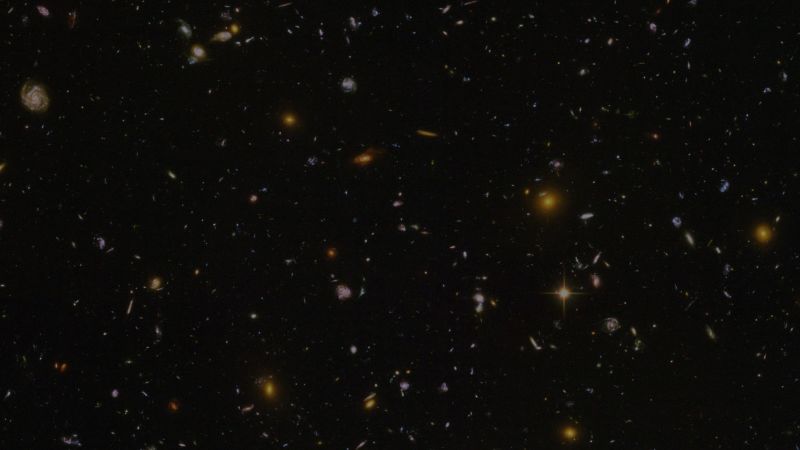A study of octopus DNA may have solved an enduring mystery about when the rapidly melting West Antarctic ice sheet last collapsed, unlocking valuable information about how much future sea levels may rise in a warming climate.
The innovative research focused on the genetic history of the Turquet’s octopus (Pareledone turqueti), which lives on the seafloor across the Antarctic, and what it could reveal about the geology of the region over time.
Tracing past encounters across the species’ various populations suggested the most recent collapse of the ice sheet occurred more than 100,000 years ago during a period known as the Last Interglacial — something geoscientists suspected but had not been able to confirm definitively, according to the study published Thursday in the journal Science.
“This project was exciting because it offers a brand-new perspective to solve a long-standing question in the geoscience community,” said lead study author Sally Lau, a postdoctoral research fellow at James Cook University in Australia.
“DNA of living animals today contains all the information about their ancestors (in the) past, so it’s like a time capsule,” she said.
The research team arrived at its findings by sequencing the DNA of 96 Turquet’s octopuses that had been collected by institutions around the world and through fishing bycatch over the years. The oldest samples dated to the 1990s, but when sequenced, their genes provided what was essentially a detailed family tree going back millions of years.
Octopus family tree
The DNA analysis enabled researchers to understand whether different populations of Turquet’s octopuses had interbred and at what point that interbreeding had happened.
“It’s like doing a 23andMe on the octopus,” Lau said, referring to the genetic testing company. “This information gets passed down from parents to children and grandchildren and so on.”
Today, populations of Turquet’s octopus in the Weddell, Amundsen and Ross seas are separated by the continent-size West Antarctic ice shelves and can’t intermingle.
However, the study suggested that there was last genetic connectivity between these populations around 125,000 years ago, during the Last Interglacial, when global temperatures were similar to today’s.
This finding indicated the West Antarctic ice sheet had collapsed during this time — an event that would have inundated coastal regions but opened up ice-bound areas on the seafloor that the octopuses would be able to occupy, ultimately encountering and breeding with members of Turquet’s populations that were once geographically separated from one another.
“What makes the WAIS important is that it is also Antarctica’s current biggest contributor to global sea level rise. A complete collapse could raise global sea levels by somewhere between 3 and 5 metres,” said study author Jan Strugnell, professor and director of the Centre for Sustainable Tropical Fisheries and Aquaculture at James Cook University, in a statement. Strugnell first came up with the idea to use genomic methods to investigate whether the ice sheet had collapsed during the Last Interglacial.
“Understanding how the WAIS was configured in the recent past when global temperatures were similar to today, will help us improve future sea level rise projections,” she said.
Why octopuses?
The team chose this species of octopus for the study because the animals are relatively immobile — they can only crawl along the seafloor, which means they’re more likely to breed within their genetically distinct local populations. By contrast, a fast-moving marine species such as krill would have more homogenous DNA, blurring out historical genetic connections, Lau said.
Plus, the biology of the Turquet’s octopus was relatively well-studied, and scientists understand its DNA mutation rate and generation time, which are crucial for accurate molecular dating, Lau added.
Previous studies involving species of crustacean and marine mollusk had detected a biological signature of ice shelf collapse with direct connectivity between the Ross and Weddell seas, Lau noted. But the new Turquet octopus study was the first with enough high-resolution data and an adequate sample size to understand whether that genetic connectivity was driven by the collapse of the ice sheet or a much more gradual movement of octopuses around its edges.
Lau said that her team’s genetic approach couldn’t reveal exactly when the ice sheet collapsed or how long that event took. However, with fresh octopus samples and more advanced DNA analysis techniques, it might be possible to resolve those questions in the future.
“We’d love to continue using DNA as a proxy to explore other parts of Antarctica with poorly understood climate history,” she said. “We’re constantly looking for new species to test these science questions.”
‘Pioneering’ study
In a commentary published alongside the study, Andrea Dutton, a professor in the department of geoscience at the University of Wisconsin-Madison, and Robert M.
DeConto, a professor at the School of Earth and Sustainability at the University of Massachusetts Amherst, called the new research “pioneering.”
They noted that while geological evidence had been mounting that the icy expanse of the West Antarctic ice sheet may have collapsed during the Last Interglacial period, “each study’s findings have come with caveats.”
Bringing an entirely different data set to bear on this urgent issue “posed some intriguing questions, including whether this history will be repeated, given Earth’s current temperature trajectory,” they added.
Using octopus genomics was “an innovative and exciting way” to address an important question about historical climate change, said Douglas Crawford, a professor of marine biology and ecology at the University of Miami who wasn’t involved in the research.
“This is a careful study with sufficient sample size and carefully vetted set of genetic markers,” he added.
“It takes a challenging hypothesis and uses a totally independent data set that (ultimately) supports WAIS collapsed,” he said via email.







































